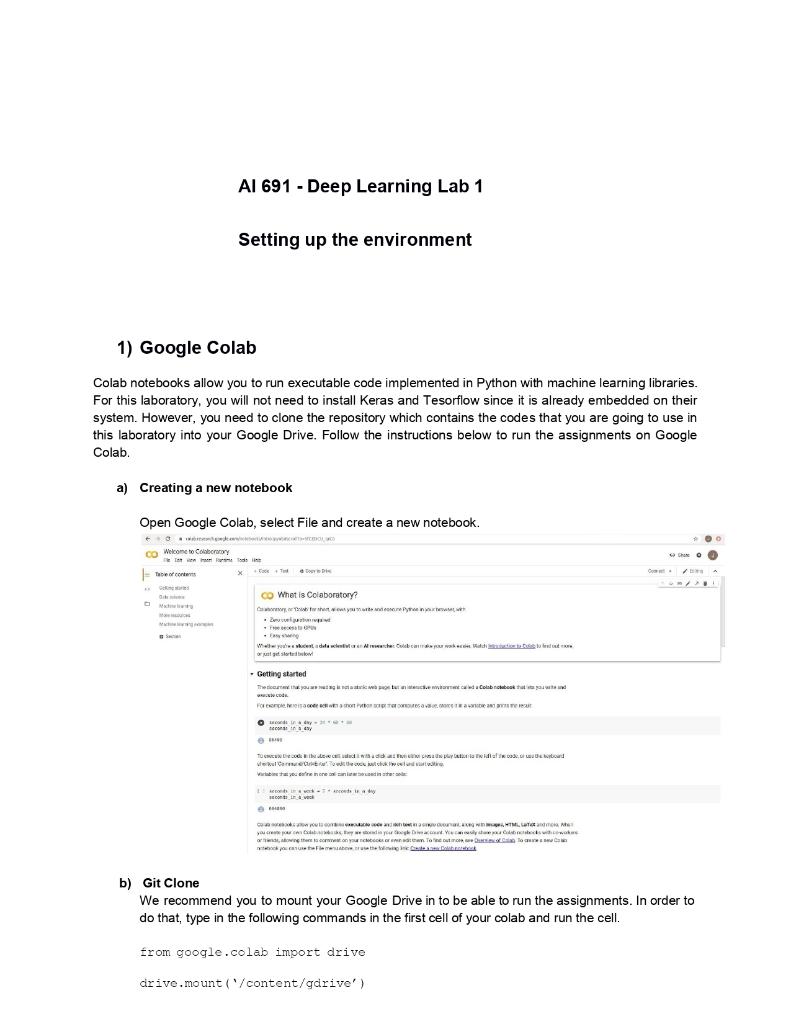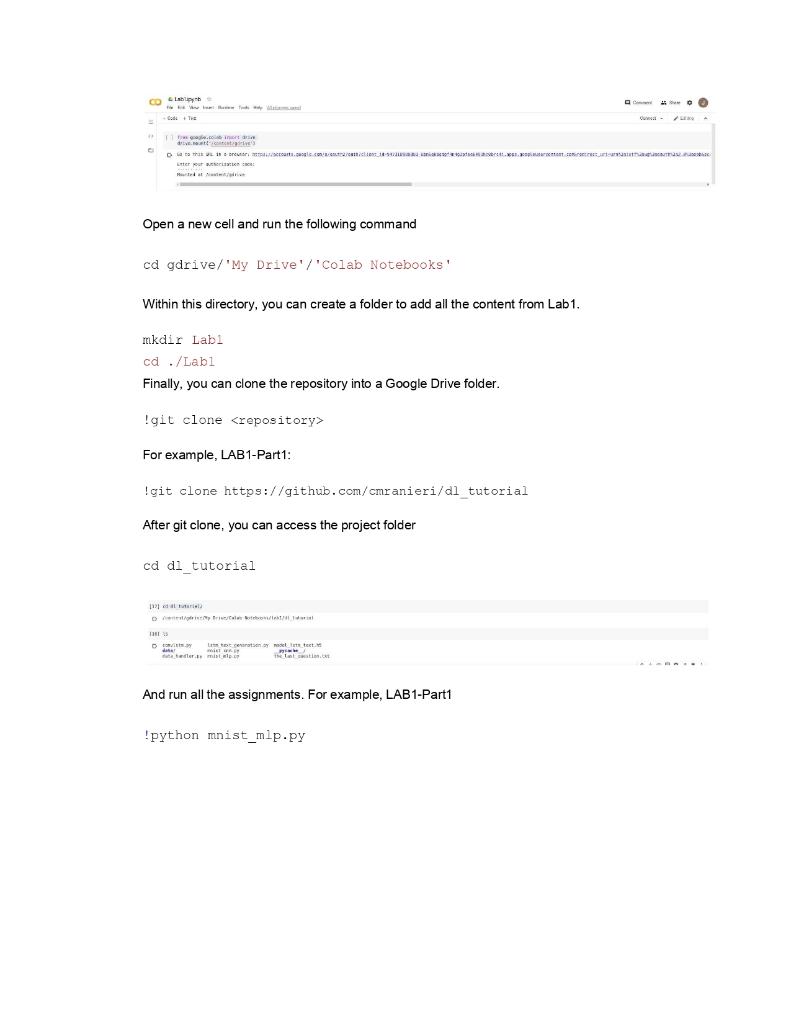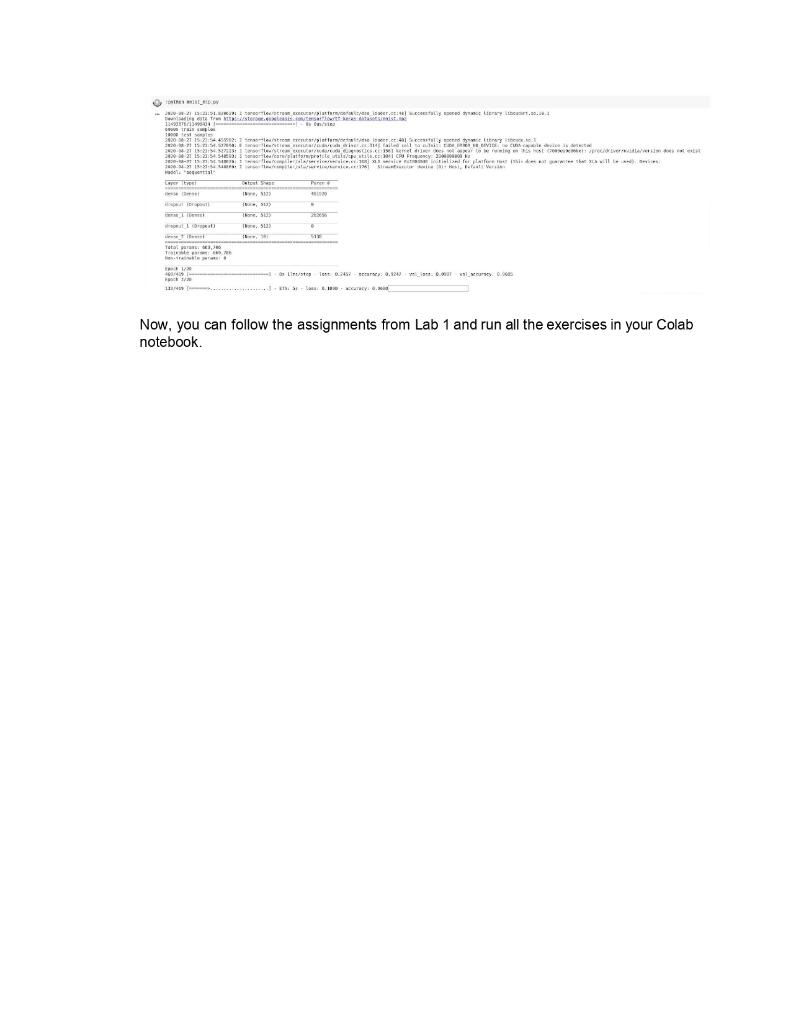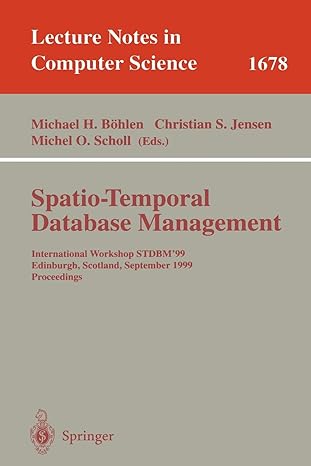



Al 691 - Deep Learning Lab 1 Setting up the environment 1) Google Colab Colab notebooks allow you to run executable code implemented in Python with machine learning libraries. For this laboratory, you will not need to install Keras and Tesorflow since it is already embedded on their system. However, you need to clone the repository which contains the codes that you are going to use in this laboratory into your Google Drive. Follow the instructions below to run the assignments on Google Colab. a) Creating a new notebook Open Google Colab, select File and create a new notebook. - Getting started The riocurnex.1 awask cods. (5) er4l b) Git Clone We recommend you to mount your Google Drive in to be able to run the assignments. In order to do that, type in the following commands in the first cell of your colab and run the cell. from google.colab import drive drive.mount ( 1/ content/gdrive') Once you run the cell, it will give a link to authorize the procedure. Access the link, copy the code and paste it on Colab. Open a new cell and run the following command cd gdrive/'My Drive'/'Colab Notebooks' Within this directory, you can create a folder to add all the content from Lab1. mkdir Labl cd ./Labl Finally, you can clone the repository into a Google Drive folder. !git clone For example, LAB1-Part1: !git clone https://github. com/cmranieri/dl_tutorial After git clone, you can access the project folder inathio than antitai - Now, you can follow the assignments from Lab 1 and run all the exercises in your Colab notebook. Al 691 - Deep Learning Lab 1 Setting up the environment 1) Google Colab Colab notebooks allow you to run executable code implemented in Python with machine learning libraries. For this laboratory, you will not need to install Keras and Tesorflow since it is already embedded on their system. However, you need to clone the repository which contains the codes that you are going to use in this laboratory into your Google Drive. Follow the instructions below to run the assignments on Google Colab. a) Creating a new notebook Open Google Colab, select File and create a new notebook. - Getting started The riocurnex.1 awask cods. (5) er4l b) Git Clone We recommend you to mount your Google Drive in to be able to run the assignments. In order to do that, type in the following commands in the first cell of your colab and run the cell. from google.colab import drive drive.mount ( 1/ content/gdrive') Once you run the cell, it will give a link to authorize the procedure. Access the link, copy the code and paste it on Colab. Open a new cell and run the following command cd gdrive/'My Drive'/'Colab Notebooks' Within this directory, you can create a folder to add all the content from Lab1. mkdir Labl cd ./Labl Finally, you can clone the repository into a Google Drive folder. !git clone For example, LAB1-Part1: !git clone https://github. com/cmranieri/dl_tutorial After git clone, you can access the project folder inathio than antitai - Now, you can follow the assignments from Lab 1 and run all the exercises in your Colab notebook










